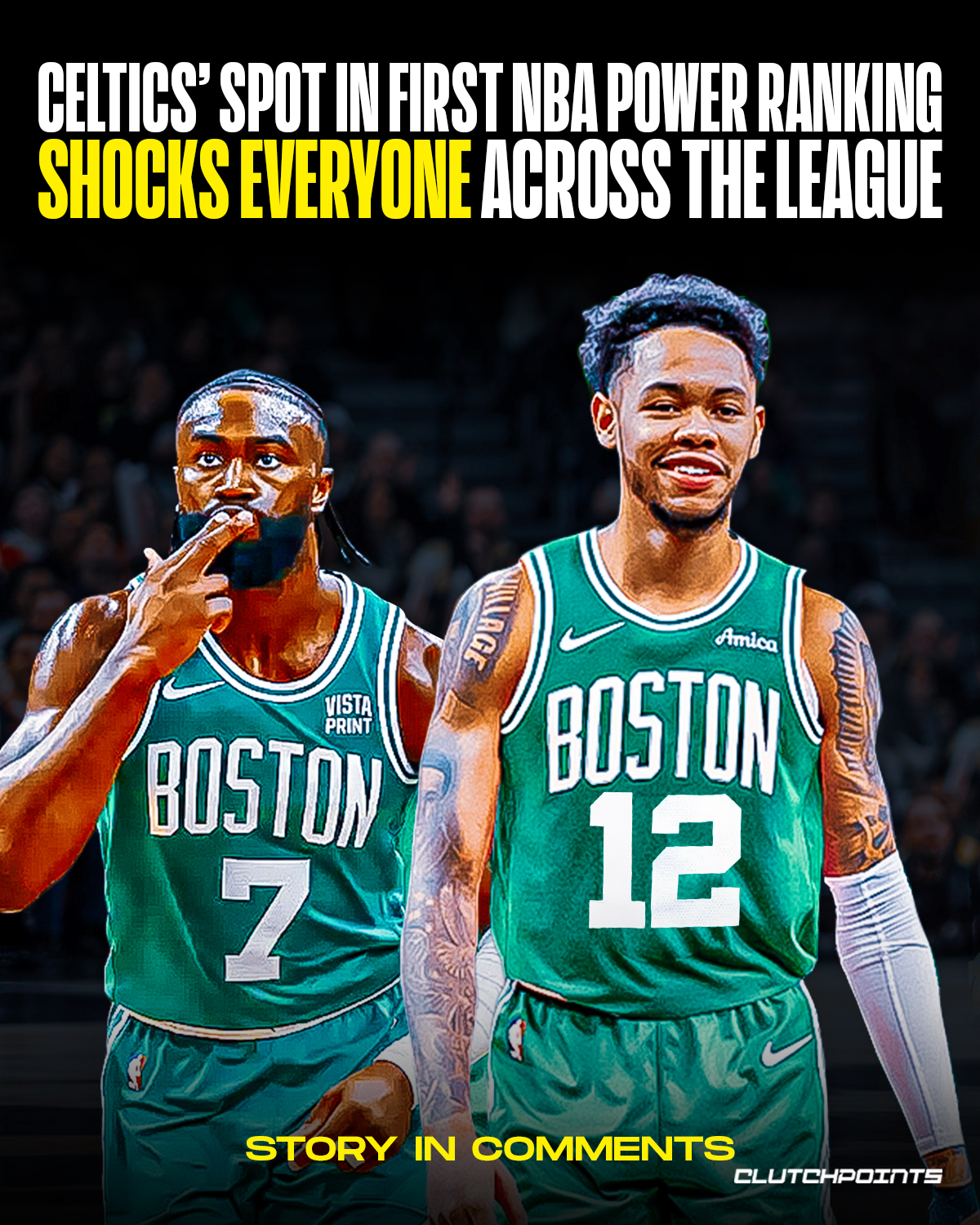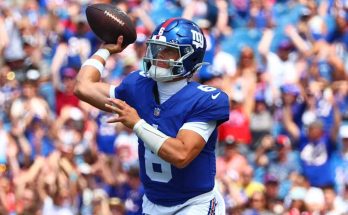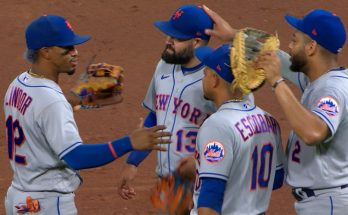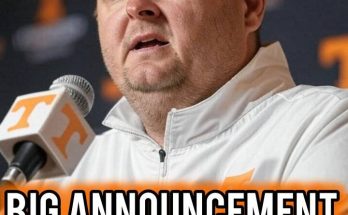The Boston Celtics, fresh off winning their 18th NBA championship in 2024, entered the 2025 offseason at the top of the basketball world. Their long quest to raise another banner had finally succeeded, thanks to a carefully constructed roster that blended superstar talent with defensive tenacity and experienced depth. Jayson Tatum and Jaylen Brown led the way as the team’s cornerstone duo, supported by key contributors like Jrue Holiday, Kristaps Porzingis, Derrick White, and a deep bench. The championship validated the bold trades and signings made by Brad Stevens in previous seasons. But to many people’s surprise, what followed was not a celebration of continuity but a rapid, dramatic retooling of the roster. In a series of bold moves during the summer of 2025, Boston reshaped its identity, moving away from the veterans who helped deliver Banner 18 and turning toward financial flexibility, youth, and long-term sustainability.
The first major domino to fall was Jrue Holiday. Brought in just before the 2023–24 season in a stunning trade that already shook the league, Holiday had quickly become a linchpin in the Celtics’ system. His defensive presence, leadership, and playoff poise were instrumental in guiding the team through a tough postseason. His arrival had come at the cost of Marcus Smart, a fan favorite and emotional leader, but Holiday more than filled that void on the court. Despite his key role in the championship, Boston traded him to the Portland Trail Blazers in a cap-clearing move that startled the fanbase. In return, they received Anfernee Simons, a younger guard with strong scoring ability, along with future draft capital. The deal was clearly driven by financial pressures, as Holiday was due over \$30 million in the upcoming season and the Celtics were staring down the harsh realities of the NBA’s new second tax apron. Under the league’s updated Collective Bargaining Agreement, repeater tax penalties for high-spending teams were more punitive than ever before. Shedding Holiday’s contract allowed Boston to avoid deep luxury tax implications, but it also meant losing one of the NBA’s most respected veteran defenders.
The trade not only changed the Celtics’ backcourt makeup, but also marked a shift in organizational philosophy. Anfernee Simons, while undeniably talented, offered a very different skill set. He was younger, less proven in the playoffs, and known more for his offensive output than his defense. Boston hoped he could inject speed, shooting, and scoring off the dribble—something that could help relieve pressure on Brown and Tatum, especially with Tatum sidelined to begin the 2025–26 season due to an Achilles injury sustained during the previous playoffs. Yet the move sparked concern among fans and analysts who wondered whether the Celtics were taking a step backward in terms of championship viability in the name of avoiding financial pain.
Only days later, the Celtics made another seismic decision. Kristaps Porzingis, who had signed a lucrative extension before the start of the championship season and had provided an essential combination of rim protection and floor spacing, was traded to the Atlanta Hawks in a three-team deal. Porzingis had been a gamble to begin with—his injury history was lengthy, but his skill set as a stretch big made him a unique fit next to Boston’s stars. When healthy, he had thrived, offering matchup nightmares for opponents and opening up the floor for Brown and Tatum. Yet his health remained a concern, and the cost of retaining him under the new cap structure proved too great. In return, the Celtics acquired veteran forward Georges Niang, a capable shooter known for his high basketball IQ and reliable effort, along with more draft assets. While Niang was not expected to replace Porzingis in terms of talent or production, the deal freed up more cap space and gave the Celtics flexibility moving forward.
These two trades—moving on from both Holiday and Porzingis—essentially dismantled the team’s 2024 playoff front and backcourt. They signaled not just a retooling but a recalibration of expectations. With Tatum out and Brown still in his prime but on a massive extension, the Celtics appeared to be threading a narrow needle: staying competitive while avoiding the heaviest financial penalties and remaining adaptable for the future. It was a delicate balance between short-term competitiveness and long-term planning.
Further complicating matters was the persistent speculation about Jaylen Brown’s future. After winning Finals MVP in 2024 and posting another strong season, his trade value had never been higher. Rumors swirled that Boston had discussed potential deals involving Brown, including a blockbuster swap for Miami Heat center Bam Adebayo. Though no trade materialized, the fact that Brown was even being considered as a trade piece underlined just how aggressively the Celtics were exploring ways to reshape the roster while keeping one eye on the future.
Meanwhile, Boston also made smaller moves around the edges. Reserve center Luke Kornet left in free agency, signing a longer-term deal with another team. The Celtics used the draft to select Spanish wing Hugo Gonzalez with the 28th overall pick, a 19-year-old prospect with intriguing two-way potential but unlikely to contribute right away. Other depth additions, like forward Josh Minott and center Luka Garza on two-way contracts, indicated a desire to build out low-cost depth and perhaps strike gold with developmental prospects. These weren’t the kinds of moves that dominate headlines, but they were consistent with a team focused on maintaining cap flexibility and developing affordable contributors.
Through all these changes, the team retained a few critical pieces. Derrick White remained with the team after signing a contract extension and was expected to take on even greater responsibilities in the absence of Holiday. His defense, playmaking, and versatility made him a foundational piece moving forward. Jaylen Brown, at least for now, remained the central offensive option with Tatum rehabbing. Payton Pritchard, Sam Hauser, and other returning role players gave Boston a degree of continuity, but the identity of the team had clearly shifted.
What made this offseason particularly bold was not just the volume of moves, but the willingness to part with essential contributors so soon after a title. Most championship teams aim to “run it back,” preserving their core to make another push while the window is open. Boston did the opposite. Financial realities played a major role—Boston was already the league’s most expensive team entering the offseason—but this was more than a cost-saving exercise. Brad Stevens and the front office appeared to be anticipating the new landscape of the NBA: one where cap flexibility, draft picks, and younger, cost-controlled assets would be crucial for staying competitive under the league’s increasingly restrictive financial system. Rather than cling to aging, expensive stars and risk long-term inflexibility, the Celtics chose to act decisively.
Critics of the moves pointed to the loss of championship experience, especially on defense. Jrue Holiday was among the most respected defenders in the league, and Porzingis, when healthy, protected the rim at an elite level. Replacing that level of impact, particularly on the defensive end, would not be easy. Simons and Niang, while serviceable players, didn’t offer the same two-way presence. Boston’s title run had been built on an elite defense, and that foundation now appeared shakier.
Supporters, however, argued that the Celtics were making the tough decisions necessary to remain competitive in the modern NBA. They pointed out that despite the departures, Boston still had two All-NBA-caliber players in Tatum and Brown, along with one of the smartest defensive guards in Derrick White. The team had also acquired multiple future second-round picks and kept most of its first-round draft assets. If Simons developed well and Gonzalez eventually contributed, Boston might not just survive this transition—but emerge from it better positioned for the next half-decade.
Much would depend on Tatum’s return to full health. The Achilles injury he suffered was a devastating blow, and the timeline for his return remained uncertain. The Celtics were planning cautiously, hoping to bring him back in the second half of the season. In the meantime, Jaylen Brown would be tasked with leading the offense, supported by Simons and White. Head coach Joe Mazzulla, entering another season with higher expectations, would have to find new chemistry in a reshuffled locker room and adjust the team’s schemes to fit new personnel.
In retrospect, Boston’s 2025 offseason may come to be seen as a pivot point—a moment when the franchise chose the harder road of long-term planning over the safer bet of short-term continuity. The 2024 championship proved the formula could work, but the cost of keeping that group together had grown too steep. The Celtics could have tried to hold it together one more year, but instead, they tore it down with intent, aiming to preserve the viability of the Tatum-Brown era without mortgaging their flexibility.
As the 2025–26 season approaches, the Celtics will enter with a different identity, a different roster, and perhaps different expectations. But what remains unchanged is their ambition. These bold moves weren’t about settling—they were about evolving. Whether that gamble pays off will depend on how quickly the new parts coalesce and how healthy their stars can remain. What’s clear is that Boston made these changes not from a position of desperation, but from a place of confidence—confidence that they could reshape a champion into something even more sustainable, without losing sight of Banner 19.



